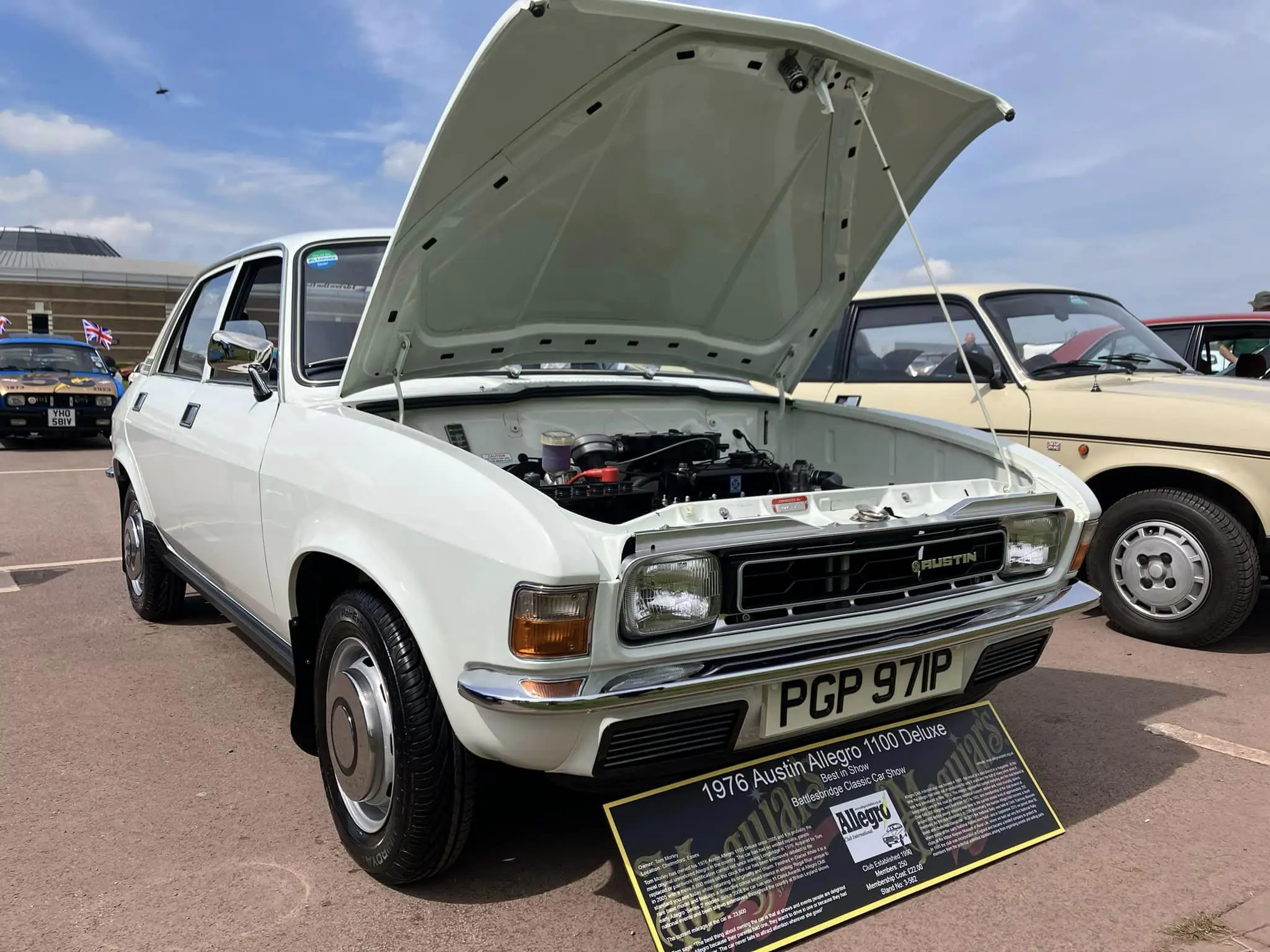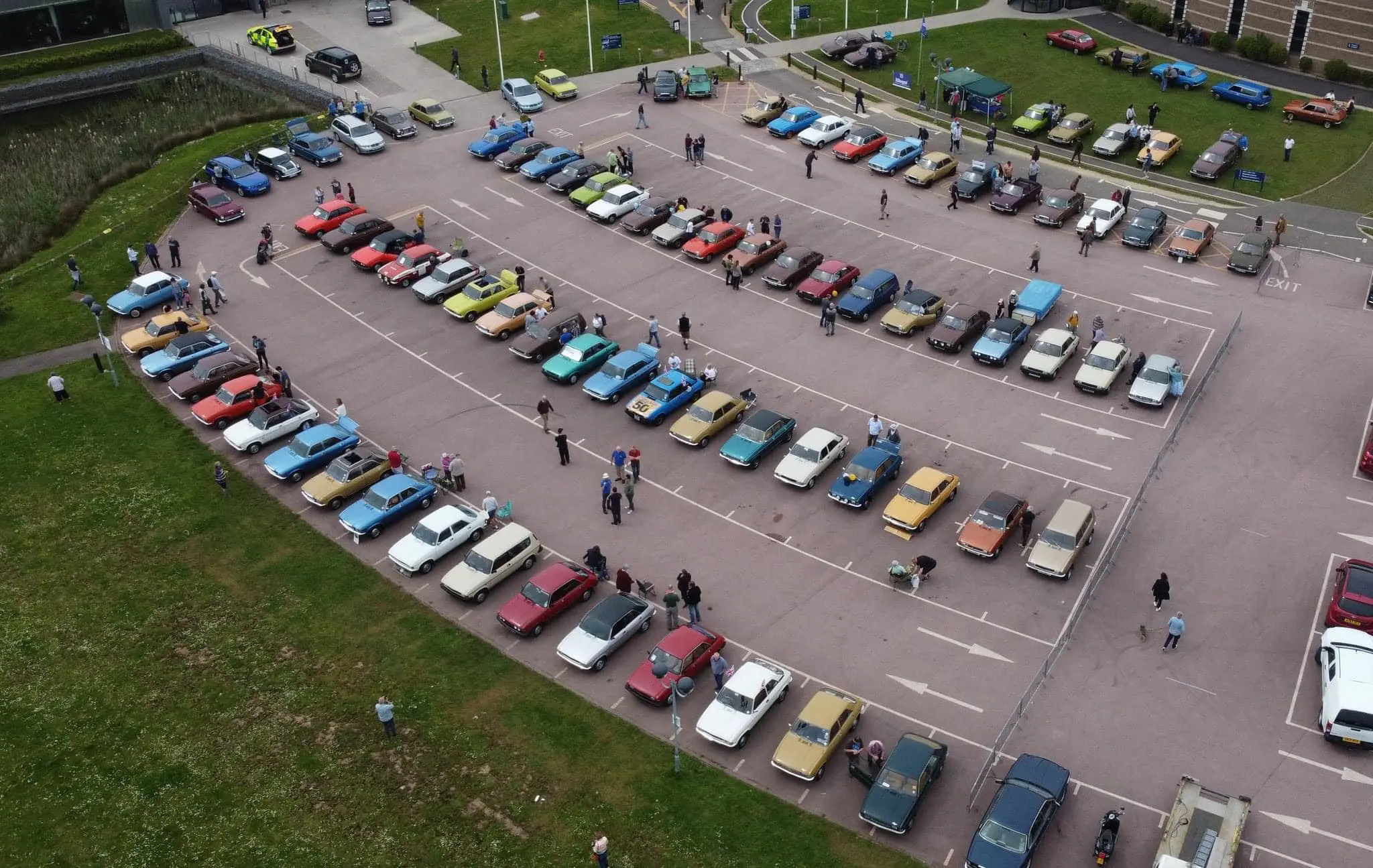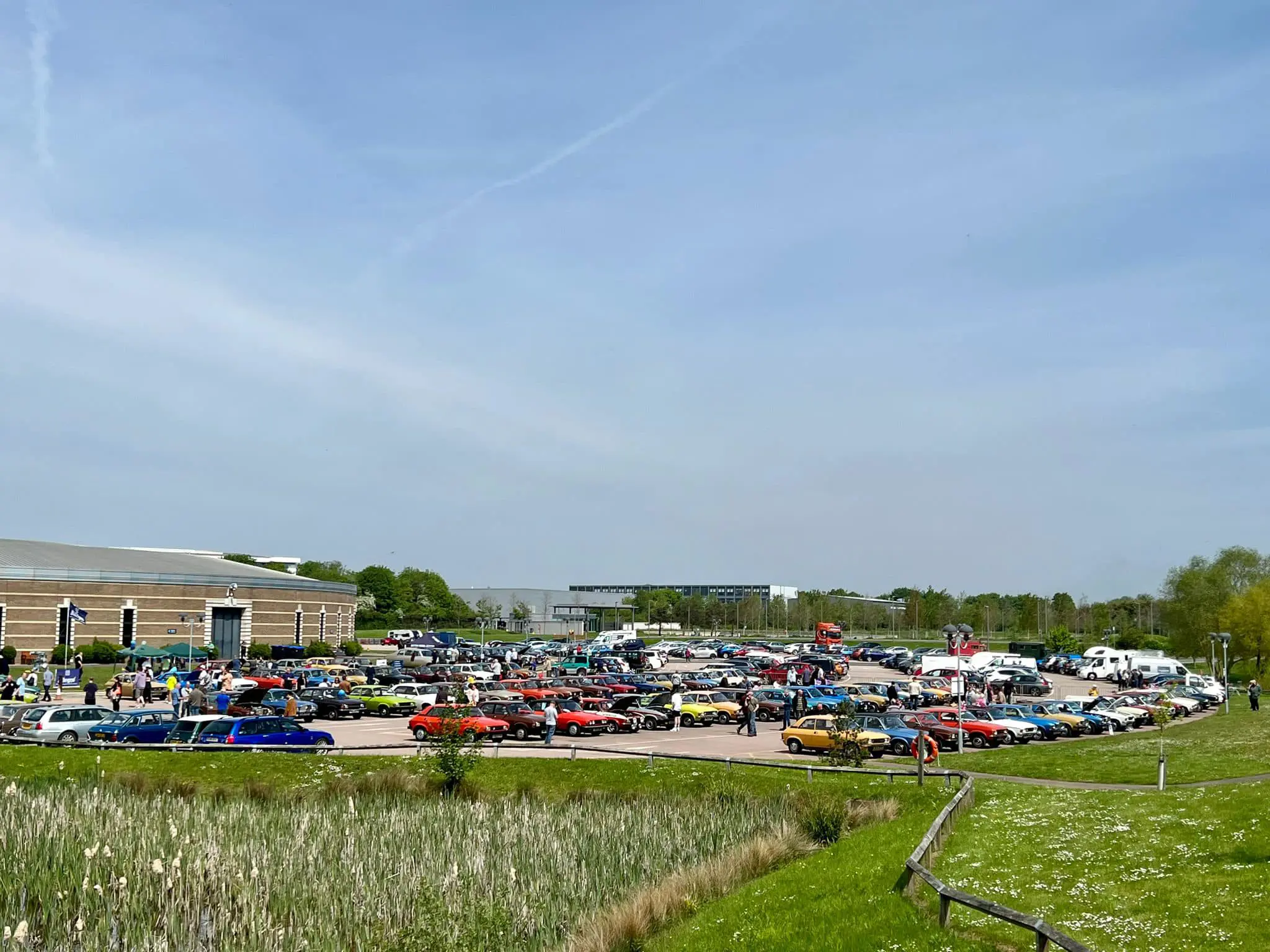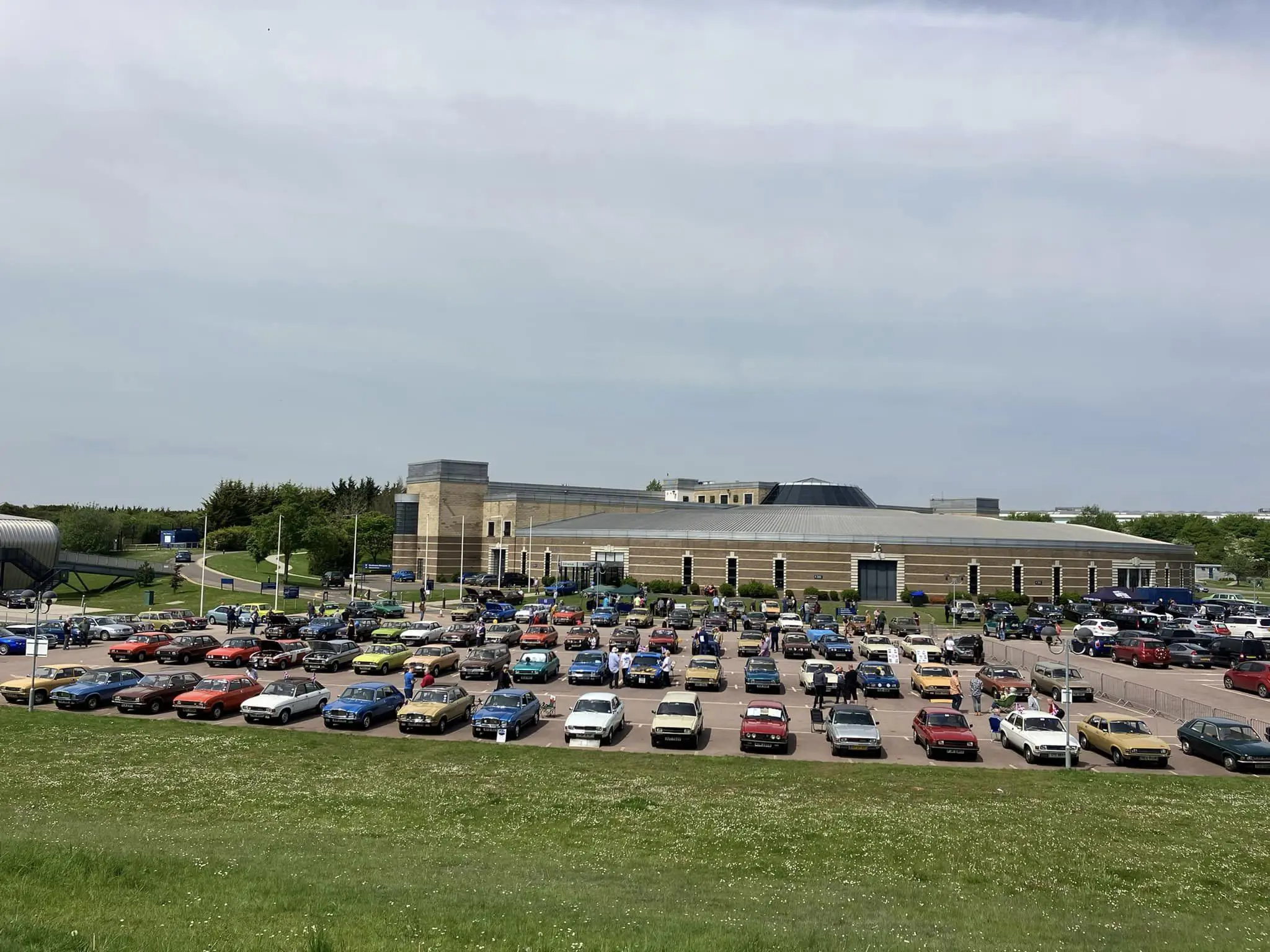50 YEARS OF THE AUSTIN ALLEGRO
31 May 2023
On the 17th May 1973, British Leyland unveiled the eventual replacement for the ADO16 1100/1300 range. According to their CEO Lord Stokes:
I’ve driven the Austin Allegro at all the stages of its development and I’m absolutely convinced that they’ve got a car here which is quite outstanding in its class and its type. The car, we believe, will appeal to European tastes as a whole.
Over the past twenty years, there appears to have been a vast change of attitude towards certain British Leyland products –the Austin Maxi, Morris Marina, 18-22 ‘Wedge’ and Austin Allegro. Yet, in some quarters, you might still encounter those who hold the last named to be a symbol of all that was wrong with the UK motor industry. So, the Allegro’s 50th birthday seems the perfect opportunity to explore the legacy of this still-controversial motor car.
The first myth that needs to be exploded is that the Allegro lacked ambition. In fact, it was the first car to feature Hydragas suspension, with displacers partially filled with nitrogen. The upmarket versions, as well as being very nicely appointed, also featured a five-speed gearbox, unlike its domestic competitors.
A second myth is that the British motoring press was universally hostile to the Allegro on its launch. The reality was a largely positive reception, with Motor Sport stating, “All in all the Allegro is the best small car ever to come out of British Leyland”, and Autocar believing the 1300 Super was “bound to be a very popular new model”. In addition, Motor regarded the 1750 Sport Special as “pretty good value at £1,366”. They wrote, “In some detail respects it is rather disappointing. Its success, however, we do not doubt”.

Car’s review was possibly the most insightful. While noting some faults, the writer thought, “If development proceeds rapidly, the Allegro could become an all-time great”. But BL in 1973 was ill-equipped to exploit the potential of “The New Driving Force From Austin”. Certainly, Stokes was a master salesman, and Clive Richardson’s description of the launch is utterly fascinating:
Like some glamorous actress British Leyland’s Austin Allegro made its debut to the press in a glare of brilliant theatrical lighting in a huge convention hall near Marbella, Southern Spain, a couple of months ago. As distractingly gorgeous model girls displayed the cars on the circular stage in a beautifully executed four-wheel ballet, Lord Stokes, George Turnbull and Filmer Paradise gave sales speeches which would have had the most hardened sales executives viewing them with admiration. This was to be the motor car which no family man could be without, a pearl in a sea of mundane family cars, the manufacturers of which would tear their hair in anguish as their sales slumped to the onslaught of this new Longbridge wonder. It was a superb piece of show business and at least temporarily convincing even to the least gullible amongst us.
But the showmanship could only partially mask that the Leyland empire was less than three years away from nationalisation. The early Allegros suffered from a lack of performance, rear legroom, and quality control. Management had also interfered with Harris Mann’s original design, and unlike its predecessor, the result was a car that did look unusual by the standards of its British rivals.
In 1962, the original Morris 1100 clad its advanced engineering in fashionable Italian tailoring. Eleven years later, the Allegro appeared decidedly offbeat compared with the Ford Escort Mk. I, Hillman Avenger, Triumph Toledo, and Vauxhall Viva HC. To rate a vehicle on its appearance may be facile, but the question remains whether Mann’s original design might have won more sales in the Allegro’s first two years of production.

A further challenge facing BL was the changing state of its export markets. In addition to being the UK’s most popular car from 1963 – 1966 and from 1968 – 1971, BMC/BLMC also made the ADO16 in a variety of Commonwealth and former Commonwealth plants. Michael Wattan, a former BL employee, recalled how Longbridge’s management tasked him with promoting the Allegro to Leyland South Africa with a view to local production - https://www.aronline.co.uk/opinion/rejected-by-south-africa/ . Alas:
One look at the first pictures of prototype cars (perversely all photographed very nicely in a muddy quarry?) and their decision was already made, no need for any viability study. In about 15 minutes, said they would not build it.
Nor did Leyland Australia make the Allegro; by 1973, Japanese manufacturers were making inroads into those markets. Meanwhile, the days of heavy import duties on European cars on its home territory were over, with more and more British drivers buying a “foreign car” for the first time.
BL’s most famous attempt at an Allegro for Continental tastes was the Regent, built by Innocenti. The Italian-built version made its bow in December 1973, and Leyland commissioned an elaborate marketing campaign -
- and even product placement in the vigilante drama Il Cittadino si Ribella. Alas, 1974 marked a significant downturn in the Italian economy, while BL’s accountants were appalled at the lack of efficiency in the Innocenti works. Regent production ended in 1975, with Alejandro de Tomaso acquiring the concern in 1976.
Back in the UK, the Allegro Mk. 2 rectified many problems (and lost the infamous Quartic ‘square’ steering wheel), but the sales impetus appeared lost. 1979 saw a third and last facelift, but when Motor evaluated a 1.5 HL, their report ominously noted, “We do not usually report the one-off mechanical disasters that occasionally afflict the cars we road-test, and indeed the Allegro suffered no major catastrophes”.
Unfortunately, “when a car is delivered with, or subsequently develops, as many defects in its trim and equipment as the Allegro, then we feel it should not go un-recorded” – namely a “drastically inaccurate tachometer, a non-functioning trip recorder, a fascia moulding that fell off, a sticking rear-door lock and several other faults”.
It was almost as if BL was doing their utmost to stifle the potential of a very promising design. The end came in 1982, although sales continued into 1983 with the introduction of the Austin Maestro. At that time, the Allegro was already the subject of a myriad of jokes, some not quite as good as the worst of Little & Large.

Today, a new generation has discovered the “Driving Force”, often motorists too young to recall news reports of yet another strike. Such owners appreciate its genuine virtues instead of repeating tired myths. On the 14th May, the Allegro Club International staged a 50th birthday rally at the British Motor Museum and Tom Morley, the owner of a splendid 1976 1100 Deluxe Mk. 2, says: “It was a superb day - over 80 Allegros”.
To conclude, here are the views of a motoring historian who is always worth reading - Keith Adams of www.aronline.co.uk. In his words:
Perhaps the most enduring legacy of the Allegro, however, is the way it embodies the optimism and creativity of the early 1970s combined with the industrial doom and gloom of an imploding UK economy and rampant strikes. Despite its many flaws, the Allegro was an innovative car that was ahead of its time in several ways, and its distinctive design and features reflect the spirit of the era. Really, it deserved better.
And, as with so many other BL cars, the Allegro really did.
With thanks to: Tom Morley and http://www.allegroclubint.org.uk/
